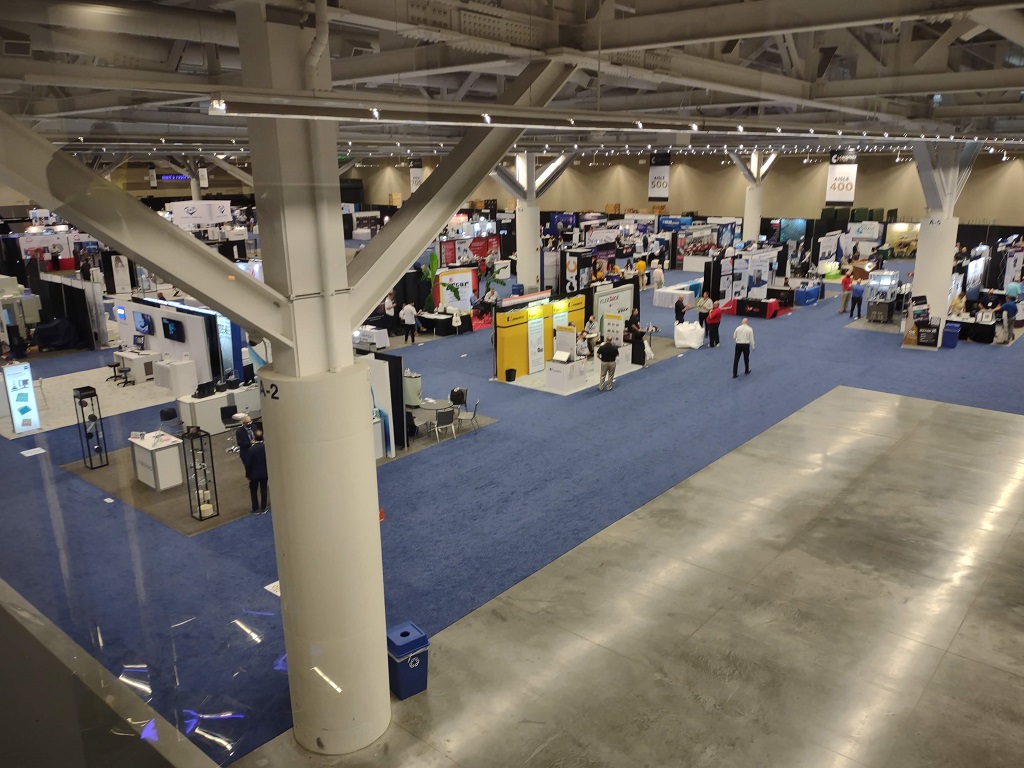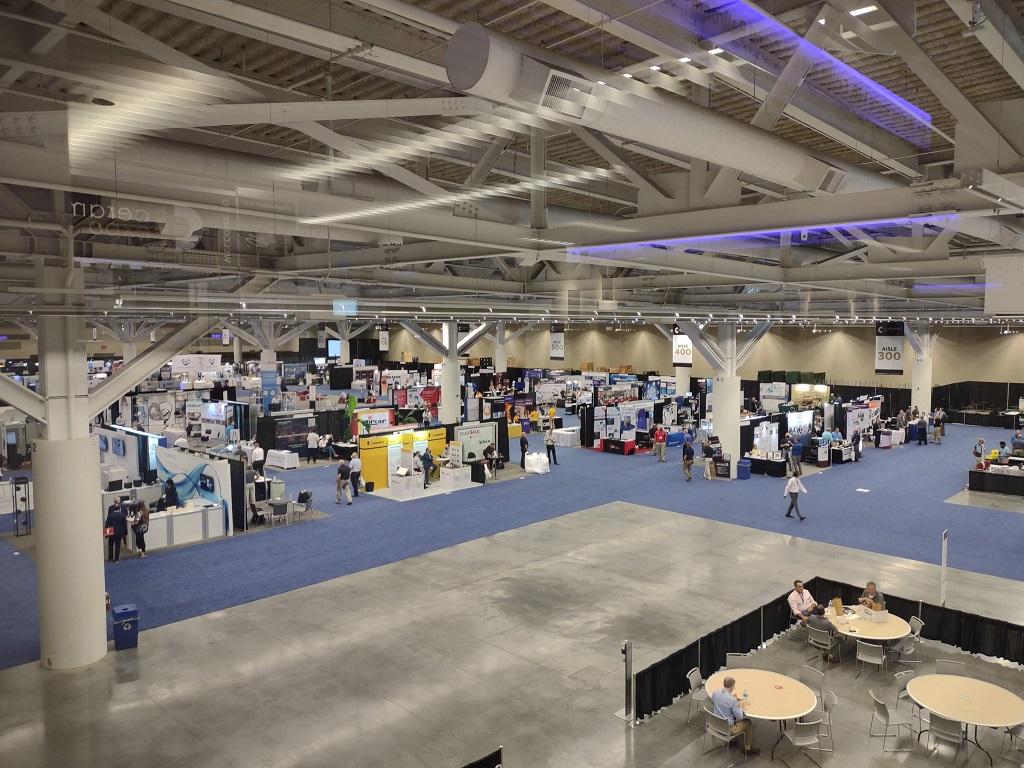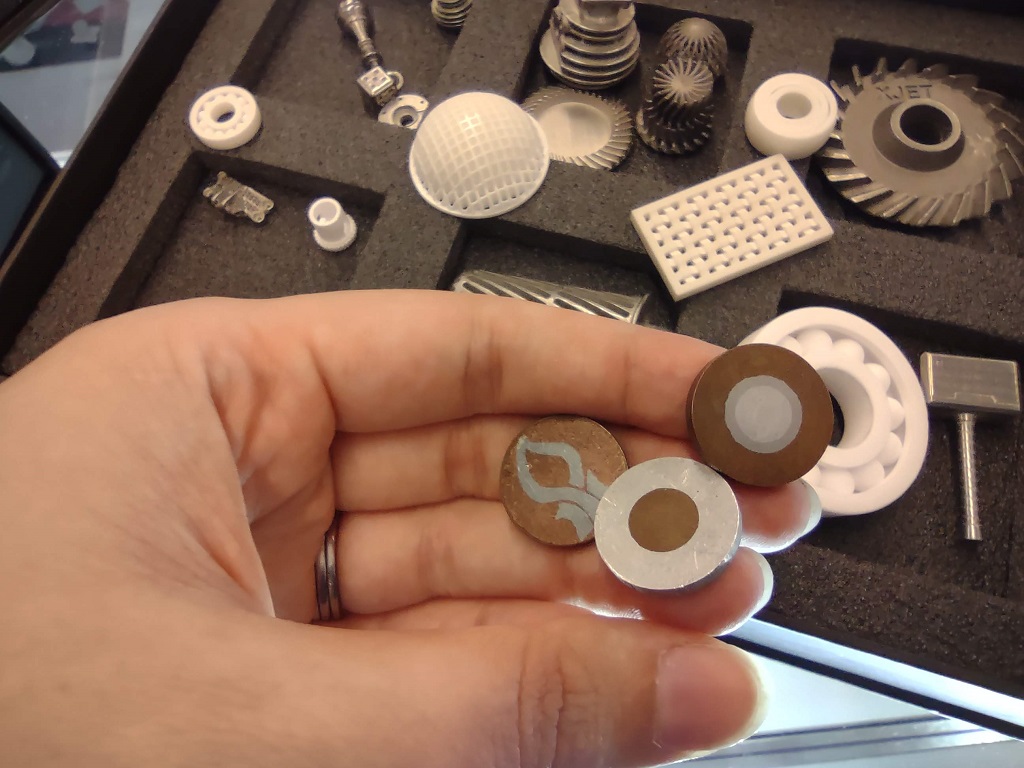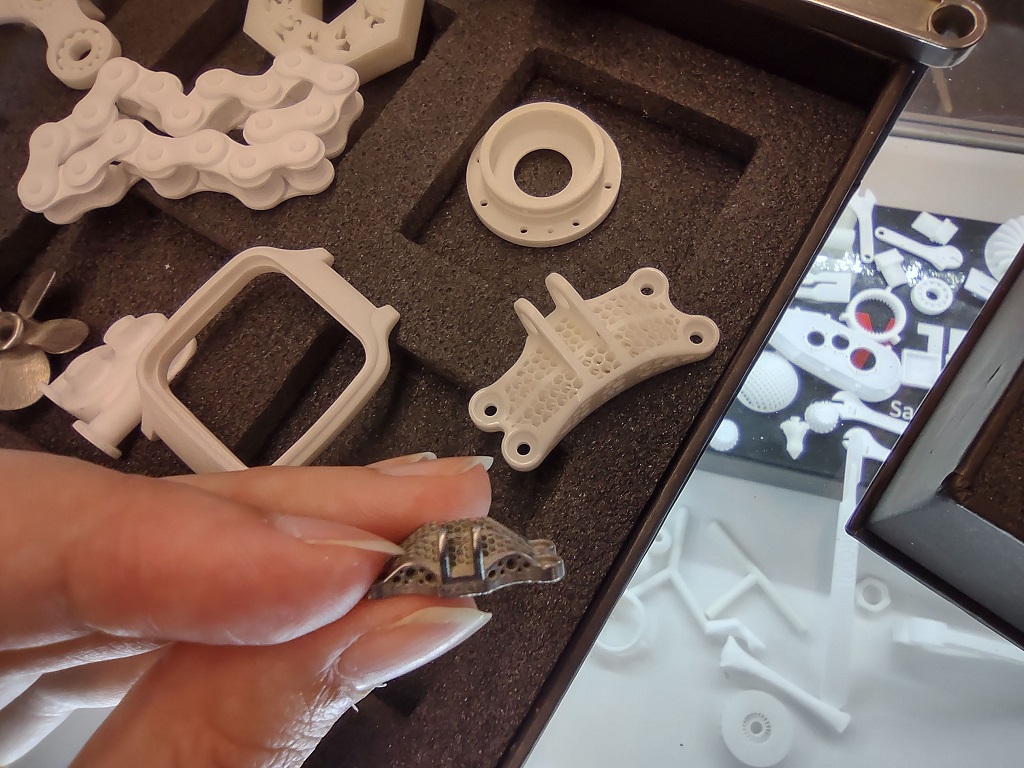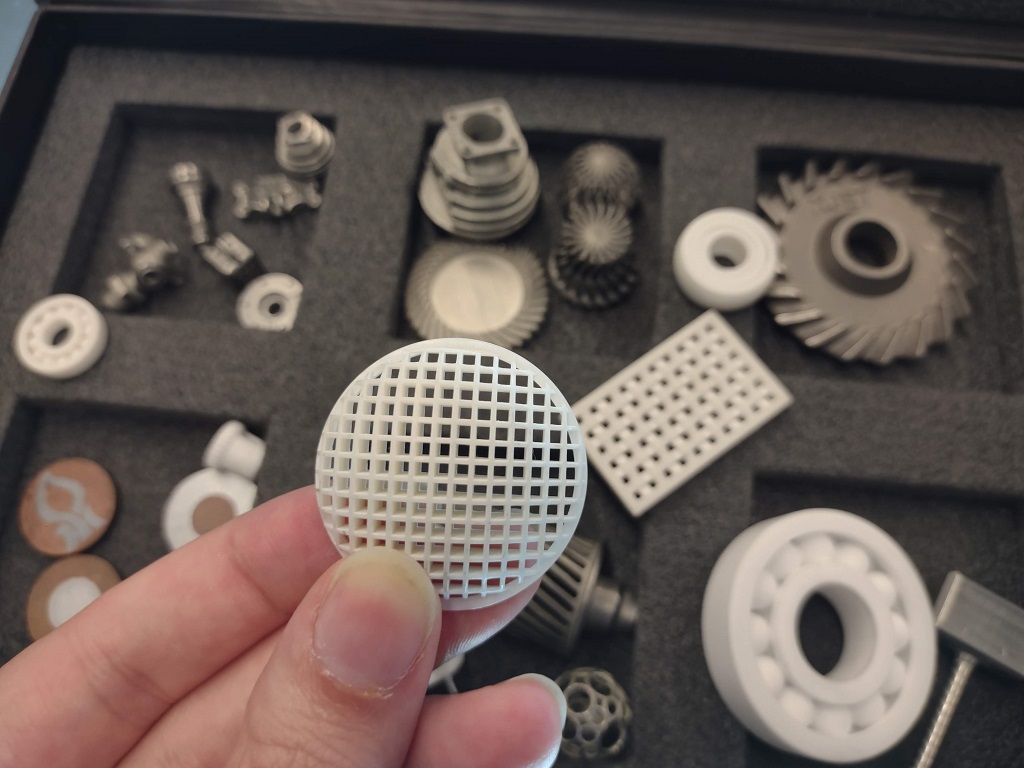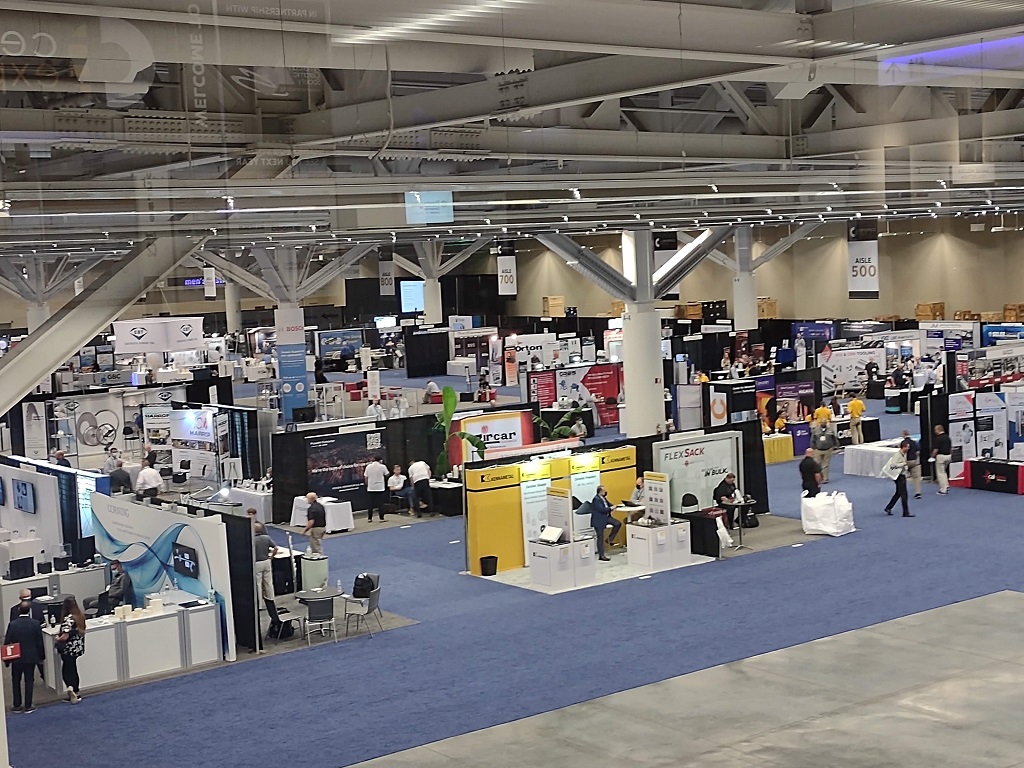
In-person industry events are moving from pandemic wish list item to real-world happenings — but what does that look like in practice?
While AMUG was the first major additive manufacturing event to return to the convention center this past spring, the Ceramics Expo in Cleveland was our team’s first real-world conference since 2019. And not, mind, our full team; with international borders still largely restricted, Kerry and Marney remain in Canada. While this event wouldn’t have necessarily been the one to draw them into the US, border restrictions will keep them from larger industry events — like next week’s RAPID + TCT in Chicago.
Let’s take a look at a few key factors for in-person events and how they compare in 2021 to the “before times.”
Attendance & Exhibitors
The Ceramics Expo marketing materials highlighted a few key stats in promoting the 2021 event, including:
- 2,000+ attendees
- 220+ leading suppliers & manufacturers from across the technical ceramic supply chain
- 30+ expert speakers for the conference
Here are a few looks at the show floor from the event itself:
It’s been a while since I’ve attended an event, so my booth counting skills could use some refreshing I’m sure. It didn’t necessarily feel like more than 200 exhibitor booths, but I also didn’t notice any empty booths from no-shows. To be fair, that’s a first in a while, as many events do have some degree of last-minute no-shows that end up being blank tables with a lonesome placard hanging up where an exhibitor would have placed their banners.
The Huntington Convention Center offers large floor space, and the Ceramics Expo booked up Halls A and B. The booths felt a bit packed in, which was nice when in the thick of things — but did leave plenty of open concrete floor on either end, near the concession areas and the long walk to the restrooms.
Frankly, attendance seemed relatively low. I tend to pop by a booth for a chat when exhibitors look approachable — that is, not busy with customers or other visitors. There was plenty of opportunity to do so, and a “crowded” booth had three visitors at a time. Certainly plenty of factors come into play here; Cleveland, while my beloved hometown, isn’t the biggest of cities and doesn’t have quite the international draw that NYC, Chicago, or LA do; ceramics isn’t a huge field; at an anticipated 2,000, attendance figures were never going to be massive anyway.
While I didn’t make it to every 3D printing company’s booth or have nearly every possible conversation, I still left pretty early on my one-day visit rather than try to fill out the last three hours of the show. By the time I left, most exhibitors were chatting quietly amongst themselves and some were already beginning to pack up.
That said, everyone I spoke to was certainly happy to have attended. There are conversations had at trade shows that don’t translate so easily to virtual platforms, and deals were made at the event.
Technology
I saw a grand total of one 3D printer on the show floor. The Ceramics Expo is not a dedicated 3D printing event, so naturally I did not go in with the expectation that many would be on display. With big-name exhibitors like ExOne and XJet offering industrial ceramic solutions that tend to take up significant floor space, I wasn’t expecting to see their huge systems. Still, I had thought there might be more than the single Lithoz machine present.
3D printing booths as I saw them had a lot of marketing materials, and some had arrays of parts to get hands-on with. I spent a good bit of time examining XJet’s offerings, which had as fine a finish as one could want in ceramic (and metal) parts:
There was something of a letdown though in not seeing nearly so many parts nor systems as I might have thought would be present at a trade show. Again, this will likely be rather different for dedicated events, but did seem to mark a bit of a change from earlier editions in terms of what actually came in. None of the booths were exactly show stoppers, either; we’ll have to wait for Formnext for the two-story behemoth booths, I think.
Pandemic Precautions
As the COVID-19 pandemic continues on and the delta variant causes new case surges, precautions remain in place for any gathering. While I am personally vaccinated, as the mother of a child too young to qualify for his own vaccine, these precautions remain in the forefront of my thoughts.
The Huntington Convention Center had signs on all doors noting that masks should be worn indoors. Hand sanitizer was plentiful and visible, easily available throughout the extensive building. All staff were masked and conscientious in maintaining social distancing. The cashier sat behind a plexiglass barrier as I bought my morning coffee (credit card only, no cash). I was honestly impressed by the care taken at every step from the organizational front.
The Ceramics Expo required pre-registration, and sent credentials in a pdf via email ahead of the event. Badges were to be printed at home, with lanyards available on-site. There was some help available at the registration desk, but organizers requested that all badges be pre-printed as much as possible to lessen points of contact. This was a clever strategy, and also pleasantly time-saving as waiting in that registration line tends to be a surprising time suck at events.
Beyond organizers and hosts, though, pandemic response was quite varied. As certainly anyone going out in public, particularly in the US, has noticed, masking remains common but not ubiquitous by any stretch of the imagination. At a guess, maybe two-thirds of attendees and exhibitors were wearing masks. Vaccination was not a requirement for attending. I spoke with an unmasked gentleman at the networking evening for some time before he noted his stance against currently available COVID-19 vaccines. I took my leave of the conversation shortly thereafter and kept my mask on at all times when not eating/drinking, during which times I maintained social distance, and otherwise only took it off for a photo with the fully-vaccinated XJet team.
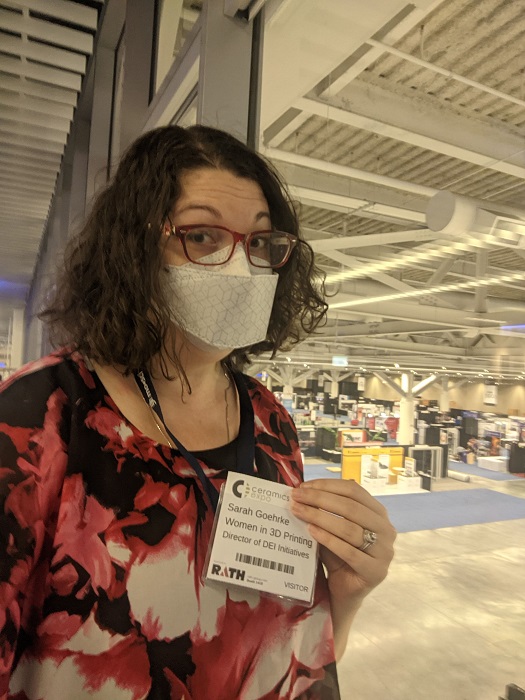
Living and working during a pandemic is difficult, as anyone throughout human history can attest. That this latest virus has been politicized has added an additional level of difficulty, as responses tend to align more to political stance than to scientific reasoning and precaution.
There has been a movement over the last several weeks on LinkedIn from several leaders in the 3D printing industry. Begun perhaps by Benny Buller, the CEO of VELO3D who famously required his entire team to be vaccinated, the informal campaign has seen executives from a number of companies requesting that RAPID + TCT require masking and vaccination from all attending. The city of Chicago has already reinstated its masking requirements, which will be in place at McCormick Place. As for vaccination requirements? No word yet that I’ve seen from event organizers.
Such a requirement would see some of those who have already registered, like the gentleman I spoke with, unable to attend. He was not happy to hear about the movement. I noted my respectful disagreement with his stance, and our conversation did end on a polite enough note.
RAPID + TCT will also have an inherent drop in attendance as compared to previous years due to international restrictions. We likely won’t see much, if any, presence from Europe, Canada, or some other areas of the world. The XJet team noted that Israel has in place a requirement for some quarantine following travel to the US, though obviously travel is possible and the XJet team expects to come back for RAPID.
What will the rest of 2021 hold for in-person events? Naturally the situation continues to fluctuate as cases do, so all plans remain fluid. The Formnext team is full steam ahead in planning for an in-person event in November, though there is also another virtual offering in the works for December from the Frankfurt team.
I hope to see more of the industry — safely — as we slowly return to the physical world.

